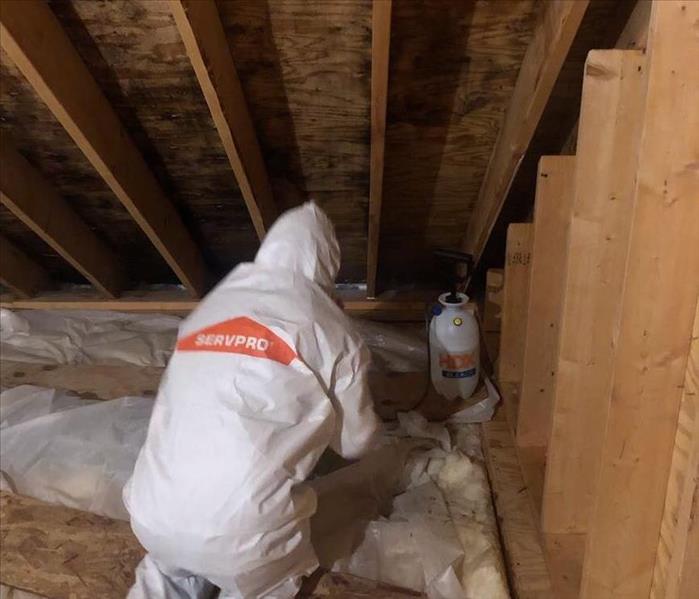Expert Techniques for Disinfecting After Water Damage
3/13/2024 (Permalink)
 Experts, such as our SERVPRO of The Seacoast team, have the knowledge, equipment, and experience to thoroughly sanitize and disinfect your property.
Experts, such as our SERVPRO of The Seacoast team, have the knowledge, equipment, and experience to thoroughly sanitize and disinfect your property.
Water damage not only wreaks havoc on your property but also poses serious risks due to potential bacterial and mold growth. Proper sanitization and disinfection are critical steps in restoring a safe and healthy environment after water damage. Here's a comprehensive guide on how to properly sanitize and disinfect after water damage:
1. Safety First
Before starting the sanitization process, prioritize safety. Wear protective gear such as gloves, goggles, and a mask to prevent direct contact with contaminated water or surfaces.
2. Remove Excess Water
Begin by removing excess water from affected areas. Use pumps, wet/dry vacuums, or towels to extract as much water as possible. This step is crucial in preventing further water absorption and reducing moisture levels.
3. Clean Surfaces
Thoroughly clean all surfaces affected by water damage using a mild detergent or soap and clean water. Scrub gently to remove dirt, debris, and visible contaminants. For hard surfaces, a mixture of warm water and a mild cleaner works effectively.
4. Disinfecting Surfaces
After cleaning, use a disinfectant solution to kill bacteria, viruses, and mold spores. Common disinfectants like bleach solutions or commercial disinfectants are effective. Apply the solution generously to affected areas and allow it to sit for the recommended time before wiping or drying.
5. Target Mold Growth
Areas prone to mold growth should receive extra attention. Apply a mold-specific cleaner or a mixture of water and vinegar to affected surfaces to inhibit mold growth. Allow the solution to sit for several minutes before wiping or rinsing.
6. Address Porous Materials
Porous materials like carpeting, upholstery, and drywall may require specialized treatment. Consider professional cleaning or replacement of extensively water-damaged porous items to ensure thorough disinfection.
7. Ventilation
Promote airflow and ventilation in the affected area to aid in the drying process and prevent the resurgence of mold and bacteria. Open windows, use fans, and dehumidifiers to expedite drying and maintain a dry environment.
8. Regular Monitoring
Continue to monitor the sanitized areas regularly to ensure they remain dry and free of mold or bacterial growth. Conduct periodic checks to prevent potential issues from escalating.
9. Seek Professional Help
In severe cases or if uncertain about the effectiveness of DIY disinfection, consider hiring professional water damage restoration services. Experts, such as our SERVPRO of The Seacoast team, have the knowledge, equipment, and experience to thoroughly sanitize and disinfect your property.
By following these expert steps for sanitizing and disinfecting after water damage, you can effectively eliminate harmful contaminants, mitigate risks, and restore a safe and healthy environment in your home or property. Remember, prompt action and proper techniques are key to successful sanitization and disinfection after water damage!






 24/7 Emergency Service
24/7 Emergency Service